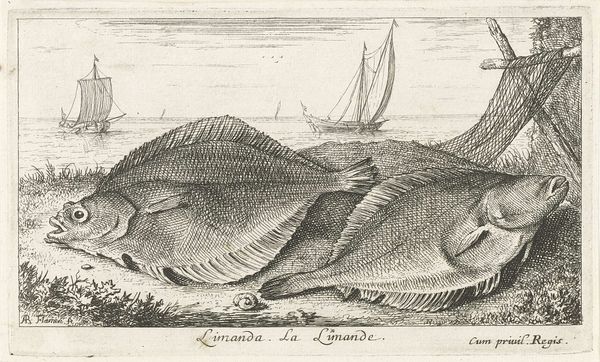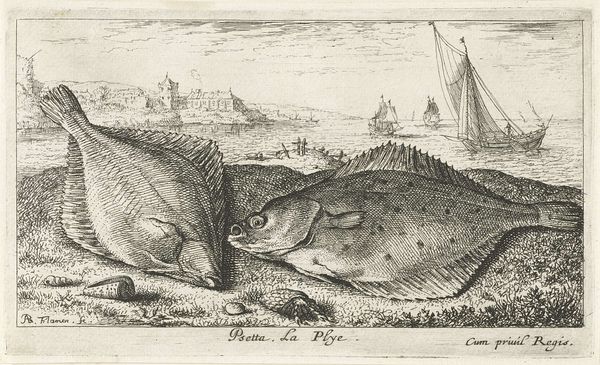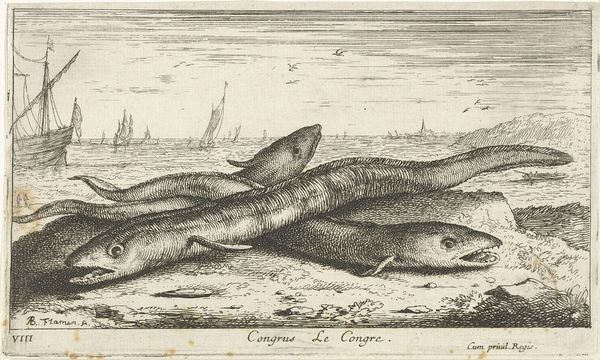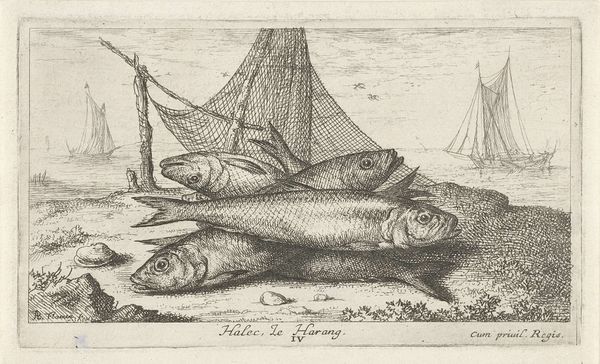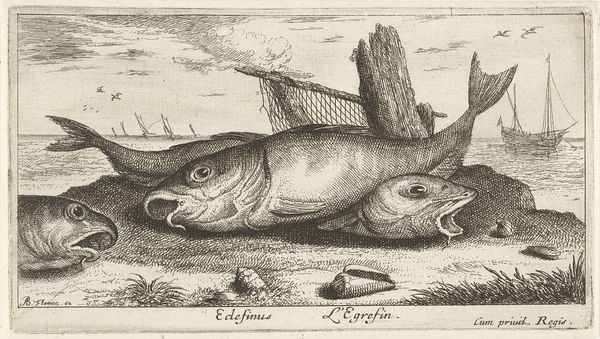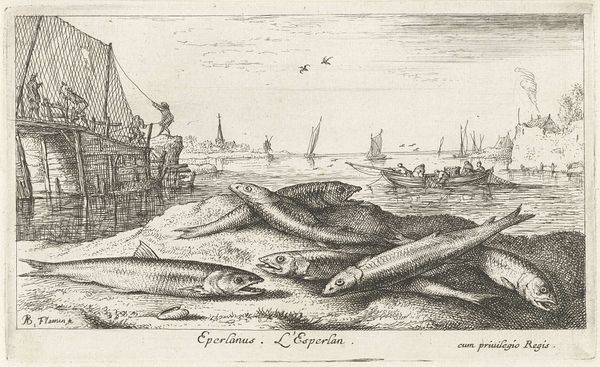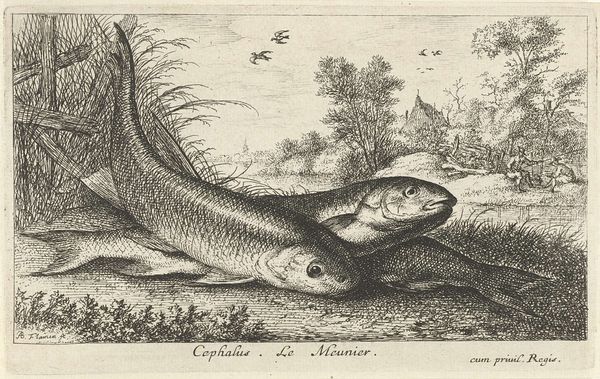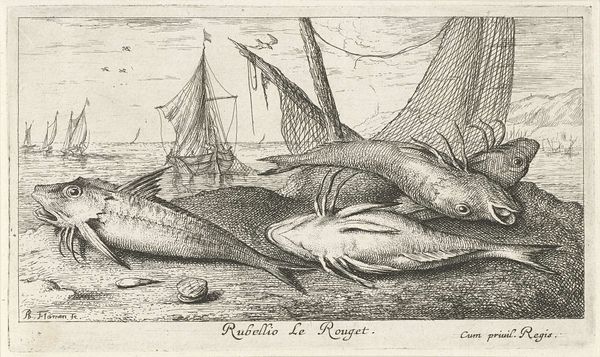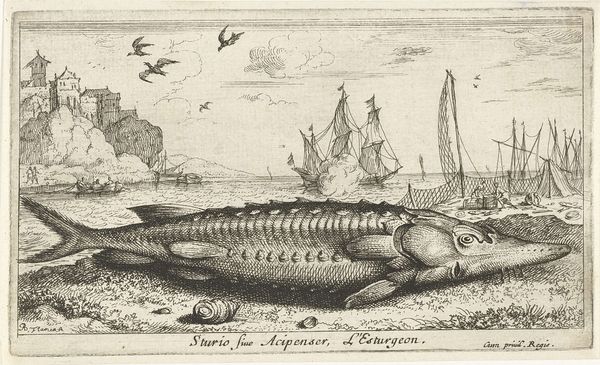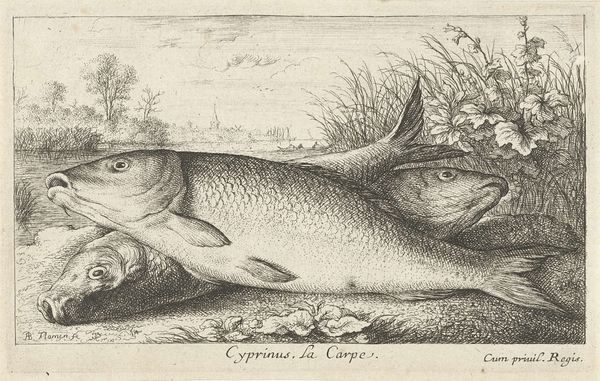
print, engraving
#
dutch-golden-age
# print
#
engraving
#
realism
Dimensions: height 107 mm, width 175 mm
Copyright: Rijks Museum: Open Domain
Curator: Albert Flamen’s 1664 print, "Drie zeetongen op het strand"—"Three Sole on the Beach"—presents such an odd intimacy. What’s your first impression? Editor: An intense focus on the means of production, for sure. I see the repetitive, rhythmic lines of the engraving process, almost as if each stroke is tracing the labour of the fisherman pulling these creatures from the sea. Curator: Exactly! It’s fascinating how Flamen uses the rigidity of the engraving to depict such pliant creatures. It almost transforms these sole into exquisite, almost architecturally-rendered objects, wouldn't you agree? They become more than just lunch. Editor: Indeed, this tension reveals much about our relationship with the natural world in the 17th century. Look at the detail given to the texture of the fish contrasted against the distant activity on the beach. Ships and small figures almost fade in comparison to this still life. The close-up forces us to recognize the act of consumption, of labor, inherent to these objects. Curator: I agree entirely. And, in a way, there's also this quiet moment of contemplation – a stillness amidst activity. Those distant ships hint at voyages, trade, possibilities... while here, right in front of us, are these fish. Each is captured at the point of being goods for the market—or ingredients of an aristocratic dinner. There’s also, despite the monochrome palette, a palpable sense of the sea—the taste of salt and wet sand. Editor: Yes! Even down to the artist inscription; all indications are given to a product destined for the open market, emphasizing his own skilled labor as much as that of the fishermen, the merchant sailors, and everyone else contributing to that economy. Curator: Precisely! I love that duality - the convergence of meticulous rendering and raw immediacy, reminding us that what seems ordinary can hold unexpected depths, prompting both critical engagement and unexpected moments of reflection. Editor: Right. Thinking about how labor practices are visualized can indeed challenge those traditional boundaries, providing insightful points from which to evaluate this visual display of 17th century modes of production.
Comments
No comments
Be the first to comment and join the conversation on the ultimate creative platform.
